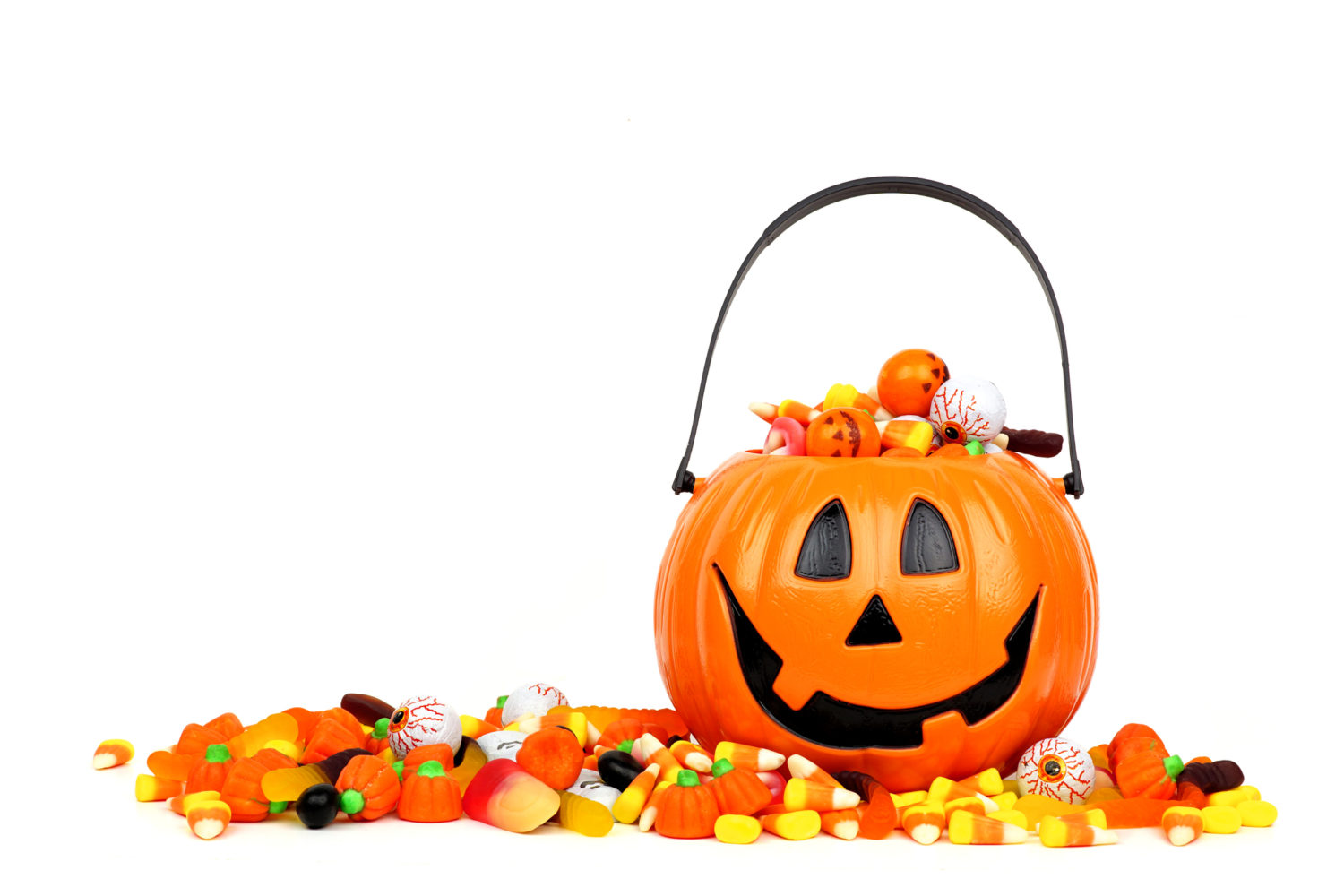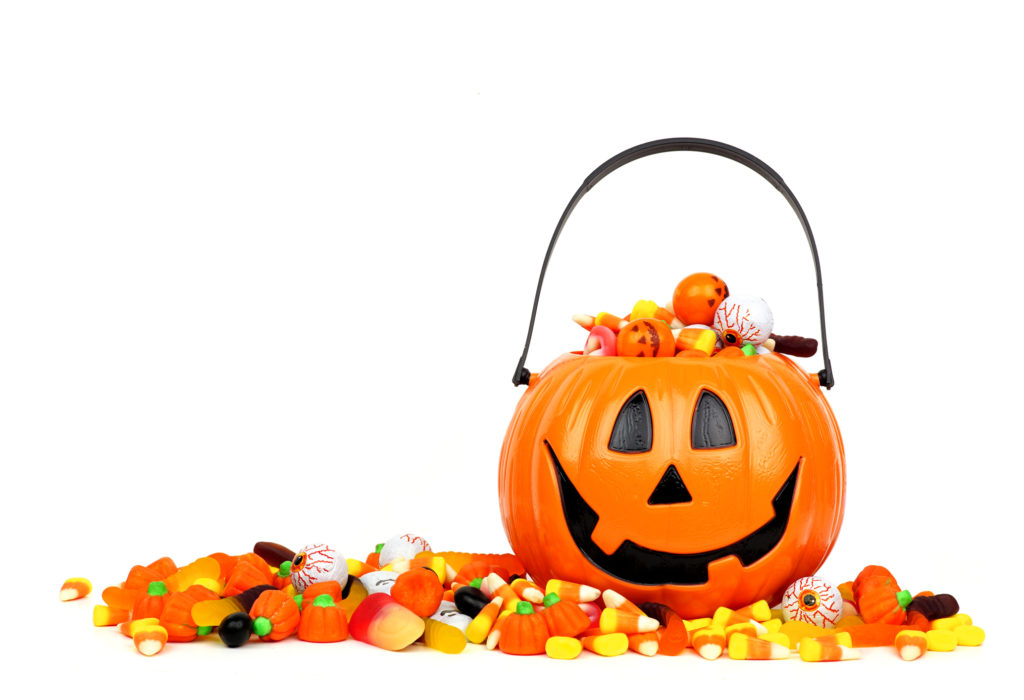
Although it seems like 2020 has already been about 5 years long (with an abundance of social media memes to reinforce this impression) it is, actually, only October and we still have the final quarter to go. It all begs the question: will this ‘challenging’ year never end? With that in mind and in a bid to squeeze some goodness out of the moment, let’s turn our focus today to every child’s favorite ghoulish celebration: Halloween. Along with questions regarding the safety – indeed possibility – of traditional ‘trick or treating,’ COVID-19 has also impacted the sales of that which is central to the celebration: spooky marshmallow candy. But not in the way you might imagine. Rather than sales having seen a drop this year, data from the candy manufacturers and retailers trade organization, the National Confectioners Association, reveal that, in comparison with the same 4-week period in 2019 (ending 9/6/2020), ‘total Halloween chocolate & candy sales are up 13% – growth that is driven by Halloween chocolate, which is up 25.3%’(1) As the report on Cision PR Newswire goes on to say: despite regional differences in the ways celebrants mark the occasion, ‘[w]hether this means trick-or-treating, more candy bowl moments at home with family and close friends, or just more time celebrating the season throughout the month of October, one thing is for sure – Halloween is happening.’ (original emphasis)(2)
But, familiar as we are with those squishy, über-sweet pillows of deliciousness, what exactly are marshmallows?
The commercial version of the treat has certainly deviated from its original recipe which was derived from Althaea officinalis, also known as the marshmallow plant. With a rather lovely five-petaled flower, Althaea officinalis is a weed that grows predominantly in Asia, Europe, and some parts of Africa and has long been used medicinally as a treatment for wound healing. To create the candy, sap was traditionally extracted from the root and whipped to form a foam as the basis of the snack. By the 1800s, the recipe incorporated a protein as a stabilizer and in 1956 an extrusion process was patented by confectioner Doumak Inc., enabling the creation of long ropes of marshmallow which were chopped into the segments we recognize today. The protein stabilizer that elevated the foamy luxury concoction to a shelf-stable everyday item in the baking aisle is usually gelatin which comes from a distinctly unpleasant source as we discussed in our earlier article, 3G: Gummy Bears, Gelatin, and GI Distress – What’s Lurking in Your Favorite Chewy Snack?: ‘Gelatin, a colloidal protein, is produced by the partial hydrolysis of bones and connective tissues sourced from slaughtered cattle, pigs, and horses.’(3) Yes, it’s perhaps best not to think too closely about that when making s’mores around the fall campfire…
And given the, to some consumers, unsavory origin of one of the ingredients, can we be sure that the product is actually safe to consume? Usually, this would bother us but in 2020 the question may be moot as, according to CNN, Just Born Quality Confections, the manufacturer also responsible for putting Peeps®, Mike and Ike®, and Hot Tamales® on our grocery store shelves, ‘temporarily suspended the production of its candy brands. The suspension was done to protect the health and safety of their employees during the coronavirus pandemic.’(4) So in effect, this year would-be trick-or-treaters will be unlikely to find the customary white marshmallow ghosts, high-viz orange pumpkins, and lurid green monsters in their trick-or-treat buckets. What’s more, their adult benefactors will be similarly out of luck with other themed sticky treats. According to a company statement: ‘This situation resulted in us having to make the difficult decision to forego production of our seasonal candies for Halloween, Christmas and Valentine’s Day in order to focus on meeting the expected overwhelming demand for Peeps for next Easter season.’(5)
Not until next year? Sadly, that is indeed the bottom line. No chewy Christmas trees, no squashy Valentine hearts. But when they do finally re-appear can we be sure that the iconic yellow fluffy Easter chicks – the delightfully multi-colored Peeps® – are going to be safe to enjoy? While researching this admittedly troubling question, those of us with a sweet-tooth here at Berkshire were intrigued to find that Just Born Quality Confections manufacturing operation in Bethlehem, PA, is a SQF-certified production facility. SQF-certified? Hmmm, as familiar as we are with other food safety acronyms, SQF (and later, GFSI) may be a little less well known, so let’s take a look.
In a nutshell, SQF is the Safe Quality Food program born of the SQF Institute, which is itself a division of FMI, The Food Industry Association.
The program is a ‘rigorous and credible food safety and quality program that is recognized by retailers, brand owners, and food service providers world-wide. Recognized by the Global Food Safety Initiative (GFSI), the SQF family of food safety and quality codes are designed to meet industry, customer, and regulatory requirements for all sectors of the food supply chain – from the farm all the way to the retail stores.’(6) In practice, the way this works is that the program offers a guide for all parties along the food product supply chain – from farms to warehouses and manufacturing facilities – to establishing and maintaining a food safety management system which is then audited on a yearly basis. And if the system promoted by the SQF Institute sounds familiar it might be because it echoes that of Hazard Analysis and Critical Control Points (HACCP) protocols. HACCP is, of course, a system to which we refer regularly at Food Contact Surfaces, but SQF is less frequently discussed. Material from the SQF Institute describes the four different programs for businesses, from specialty enterprises to large-scale corporations: SQF Fundamentals Program; SQF Food Safety Program; SQF Food Safety and Quality Program; and SQF Ethical Sourcing Program. A short online ‘Yes/No’ questionnaire assists interested parties in selecting the most appropriate option, all of which are have umbrella coverage under the SQF Compliance and Integrity Program.
And above that in the hierarchy of food safety certification programming is the second acronym that may be unfamiliar: GFSI.
The Global Food Safety Initiative is a self-described collaborative movement populated by volunteers representing ‘the world’s leading food safety experts from retail, manufacturing and food service companies, including upstream suppliers, as well as international organisations (sic), governments, academia and service providers to the global food industry.’(7) And in an era of increasing population growth along with more demanding consumers, the GFSI sees maintaining safety within the supply chain and the integrity of products as central to its vision. But what does the organization actually do? We’re glad you asked: in a tripartite approach, the GFSI is engaged in codifying a universal certification program to be leveraged by all parties within food production industries. Based on already established and well accepted standards such as ISO and the Codex Alimentarius, GFSI recognition is achieved through a process whereby safety benchmarks are ‘harmonized.’ This standardization ‘offers a passport to the global market, both for the recognised (sic) CPOs (certification programme (sic) owners) and the companies that they certify.’(8)
So it’s just another certification program? No, there’s more to GFSI that that. At an administrative level, working groups operate in seven regions, with members drawn from leading food producers and retailers such as PepsiCo, Nestlé, Costco, Dole Fresh Vegetables, Coca Cola, Ecolab Inc., and Amazon. While the mandates of each group differ, they all revolve around reviewing best practices, industry-specific food safety challenges, risk management, and the auditing of production sites. Local groups also work at a grass-roots level to create regional networks ‘to share knowledge and promote a harmonised (sic) approach to managing and improving food safety across geographies.’(9)
Although claiming otherwise, the programs both of SQF and GFSI seem to be most useful to large-scale manufacturers, with perhaps less relevance to small-scale, more boutique producers. Yet it could well be that this demographic would benefit from the expertise offered. In the case of a relatively simple product such as marshmallow treats – which are composed only of sugar/corn syrup, water, and air (gelatin notwithstanding) – it’s hard to imagine how the ingredients could pose a risk to public health. So it is no surprise that the potential for contamination can come, once again, from work processes rather than from ingredients. For instance, in a concerning incident from last year, Bauer’s Candies – a small operation in Lawrenceburg, KY which has created candies since 1889 – had to withdraw both of its signature items due to potential contamination. For the family-owned enterprise the recall was significant given that its most famous product, a caramel or chocolate enrobed marshmallow known as the Modjeska, is hand-crafted to the tune of 12 batches of between 800 and 950 pieces daily. However, when a Bauer’s employee tested positive for Hepatitis A the treats were recalled from vendors such as Cracker Barrel, QVC, and Williams Sonoma. For those mercifully unacquainted with the liver disease, Hepatitis A is a contagious infection spread via the ingestion of fecal matter. In an article published by WTOP, a Washington D.C.-based news source, although the risk associated with consumption of the candies was described as ‘low,’ Hepatitis A infection can have a long incubation period and, if symptoms appear, they may include ‘fever, headache, fatigue, loss of appetite, nausea, vomiting, diarrhea, abdominal pain, yellowing of the skin or eyes, dark urine and pale stool.’(10)
According to the federal Food and Drug Administration (FDA), HAV – the Hepatitis A Virus – is transmitted ‘when an infected person prepares food without appropriate hand hygiene, even before that person shows symptoms of illness.’(11) The symptoms may not present until between 15 and 50 days after initial exposure and ‘can range in severity from a mild illness lasting a few weeks to a severe illness lasting several months.’(12) In effect, this means that a human vector of food-borne contamination may be entirely unaware of the threat they pose until after the damage has been done. Given the long history of the company and its tradition of hand-crafting as opposed to mechanization, we have to assume that this was the situation in the unfortunate case of Bauer’s Candies.
It must be acknowledged, however, that the potential effects of such contamination are deeply unpleasant, especially given that some symptoms are also common to COVID-19 exposure. And in the time of the pandemic – with all of its associated health and healthcare challenges – the very last thing anyone wants to do is to contract an avoidable illness that mimics what is arguably the most sinister disease of our time. With that in mind, it might be prudent this October to simply avoid contact with potentially contaminated non-essential items. Yes, we hate to say it but ‘non-essentials’ just might have to include the traditional marshmallows, trick-or-treat contraband, and spooky snacks we’ve all grown to love.
And while we’ll freely admit that such caution does put a bit of a crimp on the much loved celebration of all things ghostly and ghastly, we do equally have to pose one final question…
This October, is Halloween strictly necessary, or has 2020 already been scary enough?
We’d love to know your thoughts!
References:
- https://www.prnewswire.com/news-releases/new-sales-data-shows-halloween-candy-sales-are-up-in-2020-301133508.html
- ibid
- https://food-contact-surfaces.com/2018/08/3g-gummy-bears-gelatin-and-gi-distress/
- https://www.cnn.com/2020/09/13/business/no-peeps-this-year-production-pause-trnd/index.html
- ibid
- https://www.sqfi.com/why-get-certified/about-sqf-program/
- https://mygfsi.com/who-we-are/overview/
- https://mygfsi.com/how-to-implement/recognition/
- https://mygfsi.com/who-we-are/local-groups/
- https://wtop.com/recalls/2019/01/2-bauers-candies-varieties-recalled-may-be-contaminated-with-hepatitis-a/
- https://www.fda.gov/food/alerts-advisories-safety-information/public-health-alert-concerning-possible-hepatitis-contamination-bauers-candies-modjeskas
- ibid


Pingback: The Threat to Turkey in the Time of COVID-19 - Food Contact Surfaces